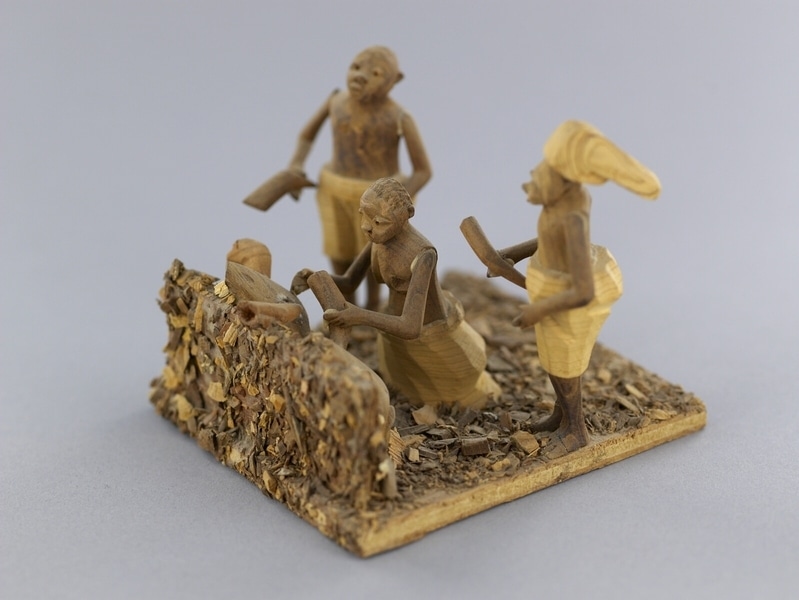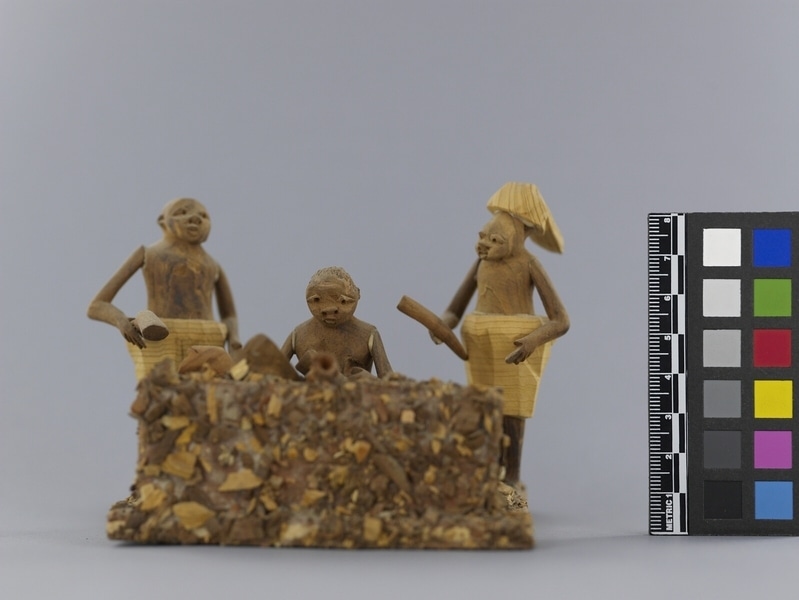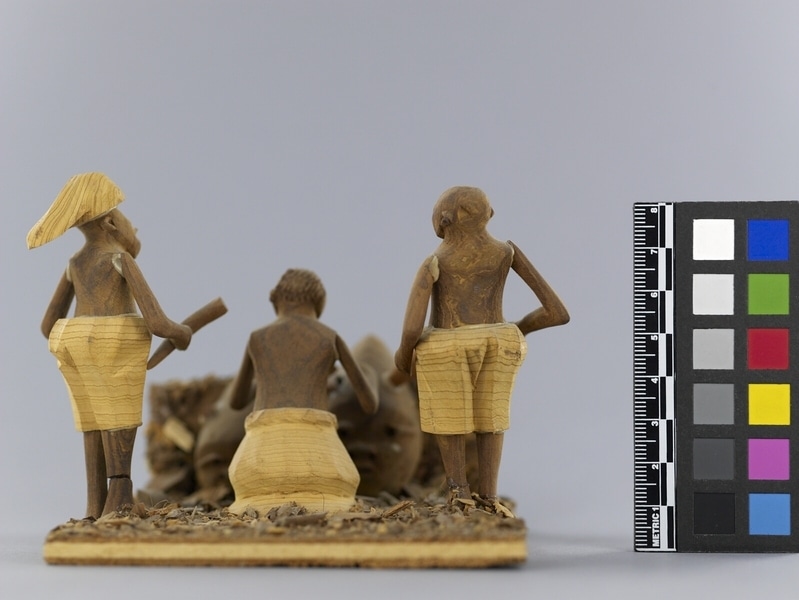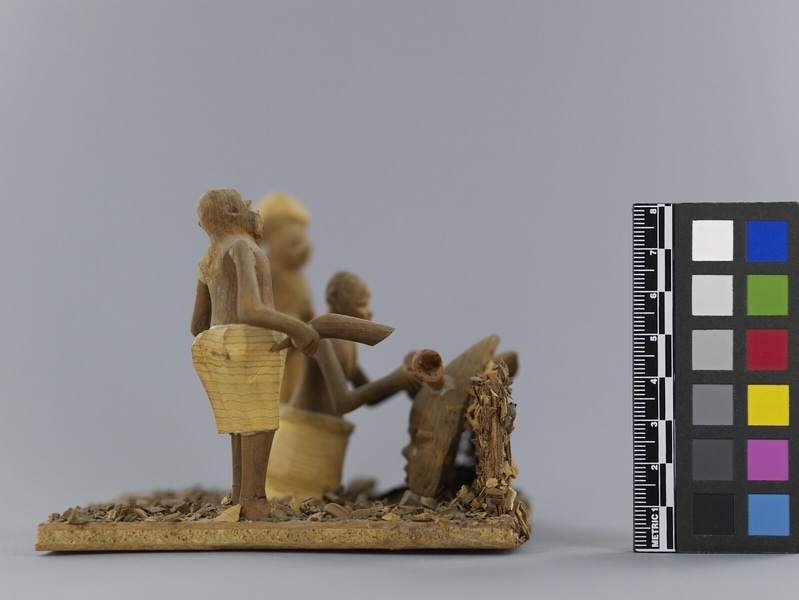Thorn Carving Item Number: Af357 from the MOA: University of British Columbia




Description
Three figures representing people, involved in a ceremony, facing a shrine wall with two masks mounted on plywood back covered with variegated thorn shavings. Kneeling female figure wearing only a long skirt is touching a horn protruding from a mask placed against the shrine wall and touching the forehead of a second mask which has horns protruding from the forehead. Two male figures wearing knee-length pants are each holding a horn in their right hands and one is wearing a draped cloth hat. Figures, masks, three horns, and some chips are dark brown. Clothing and some chips are light yellow-brown. Two horns and some chips are light red-brown. Carvings are set on a platform covered with thorn tree chips. "Osa Oko of Longe" written on base.
History Of Use
Thorn carvings are miniatures depicting scenes from Nigerian life. This type of carving began circa 1930. Thorns are carved by men and vary in size. They can be as large as 12.7 cm long and 9.6 cm. wide. They are comparatively soft and easily carved.
Cultural Context
craft; tourist art
Specific Techniques
The light yellow-brown thorn and the dark brown thorn come from the ata tree; the light red-brown thorn comes from egun trees. The parts are glued together with viscous paste made from rice cooked with water.
Narrative
This thorn carving was made specifically for the donors by the artist.
Iconographic Meaning
According to the collectors, the carving represents Osa Oko of Longe. Longe is likely a farm settlement, or forest reserve, and Osa Oko is its deity.
Item History
- Made in Nigeria before 1972
- Collected during 1972
- Owned by Andrew Stewart and Jessie Stewart before February 8, 1980
- Received from Andrew Stewart (Donor) and Jessie Stewart (Donor) on February 8, 1980
What
- Name
- Thorn Carving
- Identification Number
- Af357
- Type of Item
- carving
- Material
- wood, rice adhesive, egun thorn and atum thorn
- Manufacturing Technique
- carved and glued
- Overall
- height 8.9 cm, width 12.0 cm, depth 11.5 cm
Who
- Culture
- Yoruba
- Previous Owner
- Andrew Stewart and Jessie Stewart
- Received from
- Andrew Stewart (Donor) and Jessie Stewart (Donor)
Where
- Holding Institution
- MOA: University of British Columbia
- Made in
- Nigeria
When
- Creation Date
- before 1972
- Collection Date
- during 1972
- Ownership Date
- before February 8, 1980
- Acquisition Date
- on February 8, 1980
Other
- Item Classes
- carvings & sculpture
- Condition
- fair
- Accession Number
- 0590/0043